| |
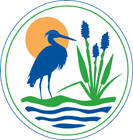
Greater Everglades Ecosystem Restoration - GEER'10
Naples, FL, July 12-16, 2010
 CLICK here for a special web-page linking to the GEER'10
website with FULL Slide Shows from the Conference Oral Presentations.
CLICK here for a special web-page linking to the GEER'10
website with FULL Slide Shows from the Conference Oral Presentations.
Catch up with those that you missed - or, sit comfortably while you can see them all.

 Koch, et al. (EF-Fellow)
Koch, et al. (EF-Fellow)
Measuring aquatic ecosystem metabolism in the southern Everglades
 Munyon, et al. (EF-Fellow)
Munyon, et al. (EF-Fellow)
Effect of phosphorus enrichment on periphyton structure, composition, and metabolism
 Prahbukar, et al. (EF-Fellow)
Prahbukar, et al. (EF-Fellow)
Development of In-field Portable Sensor for Detection of
Phosphates and Heavy Metals in Everglades Water Systems
 Romanowich, et al. (EF-Fellow)
Romanowich, et al. (EF-Fellow)
The Importance of Seagrassin Upper Florida Bay in
Modulating Flow, Waves, and Sediment Dynamics
 Ruehl, et al. (EF-Fellow)
Ruehl, et al. (EF-Fellow)
Trade-offs between nutrient and predator effects conceal
the influence of canals on snails
 Sullivan, et al. (EF-Fellow)
Sullivan, et al. (EF-Fellow)
Groundwater‐Surface Water interactions on Satinleaf Tree
Island, Everglades National Park
 Wang, et al.(EF-Fellow)
Wang, et al.(EF-Fellow)
Linking hydroperiodwith water use and nutrient accumulation
in Everglades tree island habitats
 Author, et al.
Author, et al.
Presentation Title
 Author, et al.
Author, et al.
Presentation Title
|
| |
 |
GEER'10 Conference
|
|
|
|
|
| |
Selected Slide Shows (CLICK pictures for full
PDFs)
|
|
Greater Everglades Ecosystem Restoration
GEER'10
Conference in Naples, FL - July 12-16, 2010 |
GEER'10
ABSTRACTS
|
This major Conference consisted of ORAL presentations (with SLIDES) and
POSTERS,
attracting more than 500 participants. A special web-page is devoted to
GEER'10 oral presentations.
Full SLIDE shows are available for viewing,
some supported by VIDEOS.
POSTER files are more dificult to obtain from the authors and only some selected posters could be posted for viewing on the web-site (please click the LINKS). |
|
|
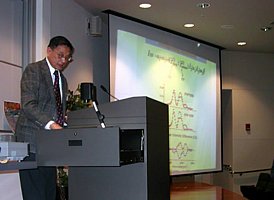 |
|
 |
The Everglades
Foundation |
|
Fellowship
Symposium - FIU, January
2010 |
|
|
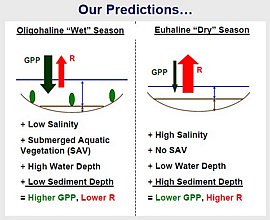 |
|
Measuring
aquatic ecosystem metabolism in the southern
Everglades. Koch, G., Stæhr, P.A.,
Gaiser, E.E. & Childers,
D.L. |
| Everglades
restoration calls for an increase in water
delivery to the major watersheds of Everglades
National Park. The responses of the estuarine
end-members of these watersheds to hydrologic
restoration are not entirely
understood. Carbon fluxes were studied in
estuarine Taylor River, an important linkage
between Taylor Slough and Florida Bay, that are
related to seasonal changes in hydrology and other
environmental drivers. We present daily
estimates of whole-ecosystem, aquatic metabolism
derived from high-frequency (10 minute) changes in
water column dissolved oxygen. By measuring
environmental variables at very fast increments we
obtain data that are very sensitive to subtle
environmental
dynamics. | |
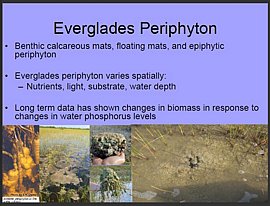 |
|
Effect of
phosphorus enrichment on periphyton structure,
composition, and metabolism. Munyon, J. & Gaiser,
E.E. (FIU - Miami,
FL) |
| Periphyton is
one of the most productive elements in the Florida
Everglades ecosystem (17-10,371 g C m-2 yr-1)
existing as cohesive mats that attain biomass
levels higher than those found in many other
wetlands. Historically oligotrophic
Everglades (water total P < 10 ug L-1) is
sensitive to this limiting nutrient that can alter
the ecosystem. Small increases in P loading
can result in major changes to periphyton
productivity, structure, and composition and this
was studied. Dissolved oxygen, mat biomass,
composition, nutrients and extracellular
polysaccharide (EPS) concentrations were measured
before and after a 4 day incubation period.
Results show significant differences in EPS
concentrations (p = 0.011) when enriched with
phosphorus. |
|
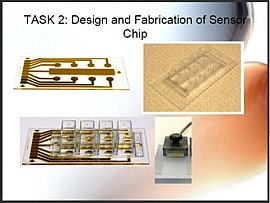 |
|
Development of
In-field Portable Sensor for Detection of
Phosphates and Heavy Metals in Everglades Water
Systems. Prahbukar, S. (FIU - Miami,
FL) |
| Improvement of
Everglades water quality is an important factor
that is addressed by the CERP as high levels of
heavy metals and phosphorus are a primary cause of
concern. Transportation of water samples for
analysis causes accuracy problems calling for a
rapid, low cost, easy-to-use, multiarray, magnetic
electrochemical sensor in a lab-on-a-chip format.
Magnetic nanoparticles coated with chemicals that
show an affinity for heavy metals will enable
preconcentration and highly sensitive detection
using small sample volumes. A multianalyte chip
based sensing system that can be used for in the
field, and anywhere else, is being
developed. |
|
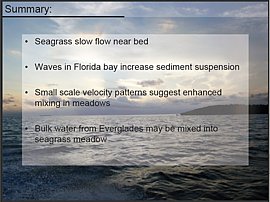 |
|
The Importance
of Seagrassin Upper Florida Bay in Modulating
Flow, Waves, and Sediment Dynamics. Romanowich, J.
(U-of-Virginia) |
Seagrass
meadows are highly productive ecosystems with
great ecological and socioeconomic significance.
The ability to reliably describe and predict the
success of both standing and restored meadows in
response to environmental change is not yet
possible. Of particular interest in seagrass
ecosystems is the influence of these biological
structures on hydrodynamics as it relates to fluid
retention as well as sediment and nutrient
transport. This study proposes comprehensive and
novel field studies of combined hydro-, sediment,
and nutrient dynamics in seagrass meadows, within
the Florida Everglades under variable wave and
tide
conditions.
|
|
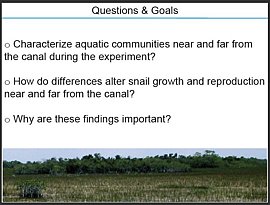 |
|
Trade-offs
between nutrient and predator effects conceal the
influence of canals on snails. Ruehl, C. & Traxler,
J. (FIU - Miami,
FL) |
| Canals are used
to control flooding and they deliver phosphorus
rich waters to adjacent marshes. That can increase
periphyton quality and increased predators near
canals. Predators affect prey in two ways: by
killing them and scaring them. The effects of
phosphorus enrichment and increased predation
threats near canals were isolated by switching
periphyton between sites near (enriched) and far
(ambient) from canals in experimental bags. Snails
grew fastest on periphyton that originated near
canals (enriched) but that was placed far from
canals (less risky) signifying that enriched
periphyton stimulates growth, while predator cues
depress snail growth. However, the net effects are
similar because the strong factors near the canal
cancel out. |
|
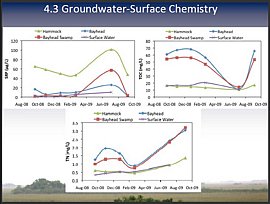 |
|
Groundwater‐Surface Water
interactions on Satinleaf Tree Island, Everglades
National Park. Sullivan, P. (FIU - Miami, FL) |
| Since the
1940’s there has been marked loss in tree island
cover across the Everglades, which has been
attributed to the altered hydrology. They provide
a critical refuge for flora and fauna that require
the increased elevation and nutrients found on
these islands. In order to better understand the
hydrology of tree islands, groundwater and surface
water levels and chemistry were monitored on
Satinleaf tree island. The interaction between the
groundwater and surrounding surface water was
driven by three main mechanisms:
evapotranspiration, water levels, and rainfall
amounts. In addition, the interaction between
groundwater and surface played an important role
in the transport of nutrients and ions within the
tree island. |
|
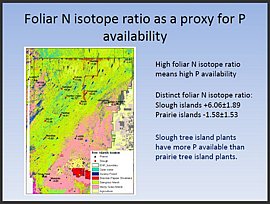 |
|
Linking
hydroperiodwith water use and nutrient
accumulation in Everglades tree island habitats.
Wang, X.,
Sternberg, L., Engel, V., & Ross, M.
(U-of-Miami) |
| The tree island
upland hammock plant communities in the Florida
Everglades accumulate nutrients to a much greater
extent than the surrounding fresh water marshes.
Stable isotopes, transpiration analysis, and
remote sensing were used to understand this
nutrient accumulation mechanism. Prairie tree
islands, located in a drier landscape, suffer
greater water deficits during the dry season than
slough tree islands. The water limited prairie
tree islands harvest less phosphorus from the
surrounding marshes than slough tree islands.
These findings are consistent with the
transpiration driven nutrient harvesting
chemohydrodynamic
model. | |
| |
|
| |
| |
| |
|
| |
|
| <<
Return to the TOP of Page |
| | |

![]() CLICK here for a special web-page linking to the GEER'10
website with FULL Slide Shows from the Conference Oral Presentations.
CLICK here for a special web-page linking to the GEER'10
website with FULL Slide Shows from the Conference Oral Presentations.
![]() Koch, et al. (EF-Fellow)
Koch, et al. (EF-Fellow)![]() Munyon, et al. (EF-Fellow)
Munyon, et al. (EF-Fellow)![]() Prahbukar, et al. (EF-Fellow)
Prahbukar, et al. (EF-Fellow)![]() Romanowich, et al. (EF-Fellow)
Romanowich, et al. (EF-Fellow)![]() Ruehl, et al. (EF-Fellow)
Ruehl, et al. (EF-Fellow)![]() Sullivan, et al. (EF-Fellow)
Sullivan, et al. (EF-Fellow)![]() Wang, et al.(EF-Fellow)
Wang, et al.(EF-Fellow)![]() Author, et al.
Author, et al.
![]() Author, et al.
Author, et al. 










